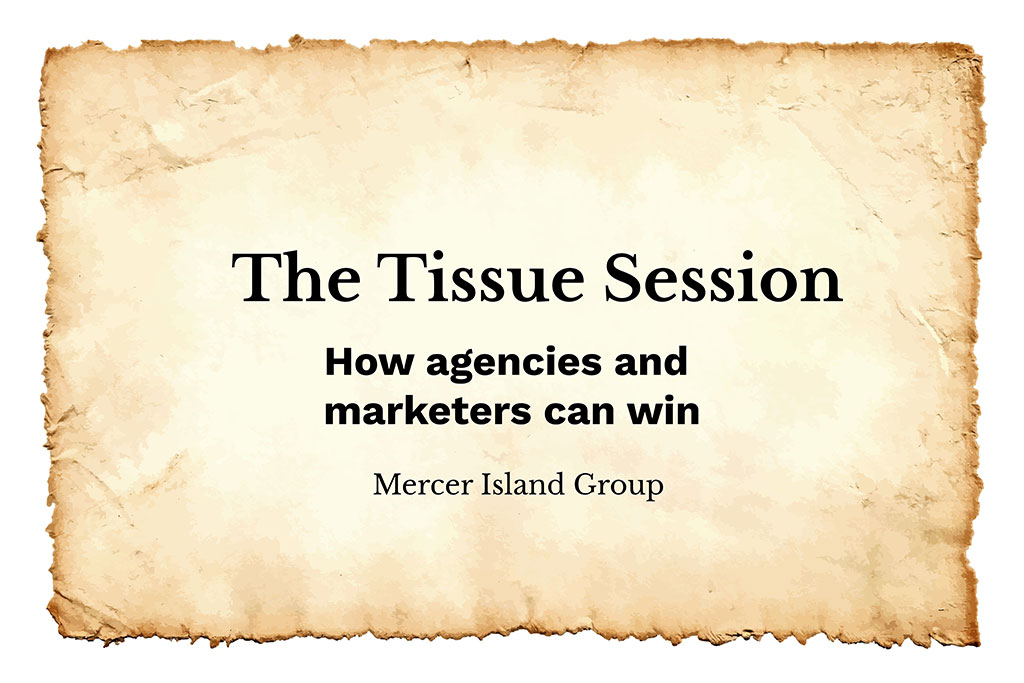The tissue session is often a key step in a competitive agency review. This guide will help agencies and marketers properly prepare for and get the most from their tissue sessions.
“Tissue Session” is a term that originated long ago, prior to the digital age. Creatives – generally Art Directors – would use tracing paper (aka, tissue paper) to draft ideas and present their work. Using the tissue paper, the Creative could markup, erase items and make revisions on the fly. The tissue session was, in effect, a precursor to a modern collaboration platform.
In a modern agency review, the tissue session now represents any midpoint work session where the agency can present early strategies or tactics and get feedback from the prospective client. They serve as an important check in during the review and done well represent a significant opportunity for both the agency and client. How can agencies use a tissue session to enhance their chances of winning, and how can marketers use the sessions to make a better decision?
- Early thinking about the business challenge
- Early strategies
- Early solution ideas
Hopefully the early work and thinking your team is doing will be the prompts for a hearty conversation.
Having experienced hundreds of tissue sessions, we have identified best practices for both agencies and clients.
Start by recapping the business challenge or opportunity.
This should be the starting point for any marketing effort and by starting here, the agency highlights that the agency’s focus is clearly on helping the client solve critical business
challenges.This is also a good point to add agency value, if your work has helped identify important nuances around the client’s business challenge.
Briefly recap the strategic analysis the agency performed to help develop insights that can lead to powerful and compelling tactics.
What did your analysis uncover about the target audience? Competition? The Brand? What insights emerged from the analysis?
Introduce early tactical ideas if appropriate. Be sure to explain how the tactics leverage the insights you’ve developed and how the resulting work will help solve the client’s business challenge.
During the meeting, help the client to provide input. Ask questions that advance the discussion like “what parts of this analysis ring true and which parts might you be questioning?”
- Wrap up the session with a summary. Recap what you’ve heard from the client team and what they should expect in the next meeting. Confirm that the client is aligned with your summary.
Listen! The agency has invested a significant amount of time and resources in your pitch. Your undivided attention is the least you can offer in return.
Ask questions for understanding.
Finally, showcase what a desirable client you are! This may be obvious, but better clients get better work. The most talented agency folks want to work on their business and the best clients get the best economic deals. Be respectful. Start on time. Give the agency your undivided attention. Net, listen actively, ask questions for understanding, and provide feedback in a manner that encourages the agency to consider how they might address a challenge rather than being prescriptive.
